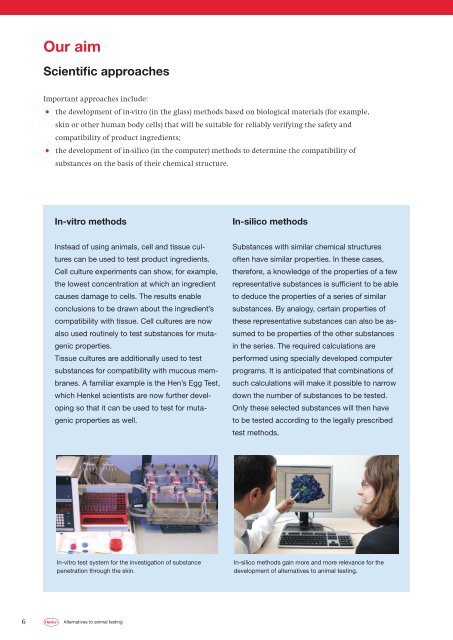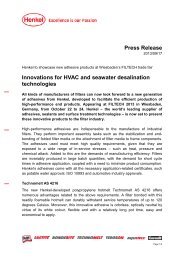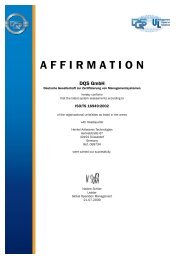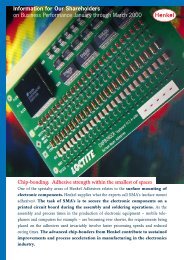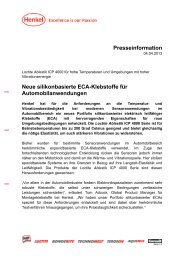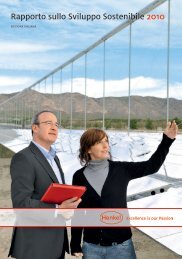Henkel: Alternatives to animal testing
Henkel: Alternatives to animal testing
Henkel: Alternatives to animal testing
You also want an ePaper? Increase the reach of your titles
YUMPU automatically turns print PDFs into web optimized ePapers that Google loves.
Our aim<br />
Scientific approaches<br />
Important approaches include:<br />
• the development of in-vitro (in the glass) methods based on biological materials (for example,<br />
skin or other human body cells) that will be suitable for reliably verifying the safety and<br />
compatibility of product ingredients;<br />
• the development of in-silico (in the computer) methods <strong>to</strong> determine the compatibility of<br />
substances on the basis of their chemical structure.<br />
In-vitro methods<br />
Instead of using <strong>animal</strong>s, cell and tissue cultures<br />
can be used <strong>to</strong> test product ingredients.<br />
Cell culture experiments can show, for example,<br />
the lowest concentration at which an ingredient<br />
causes damage <strong>to</strong> cells. The results enable<br />
conclusions <strong>to</strong> be drawn about the ingredient’s<br />
compatibility with tissue. Cell cultures are now<br />
also used routinely <strong>to</strong> test substances for mutagenic<br />
properties.<br />
Tissue cultures are additionally used <strong>to</strong> test<br />
substances for compatibility with mucous membranes.<br />
A familiar example is the Hen’s Egg Test,<br />
which <strong>Henkel</strong> scientists are now further developing<br />
so that it can be used <strong>to</strong> test for mutagenic<br />
properties as well.<br />
In-vitro test system for the investigation of substance<br />
penetration through the skin.<br />
6 <strong>Alternatives</strong> <strong>to</strong> <strong>animal</strong> <strong>testing</strong><br />
In-silico methods<br />
Substances with similar chemical structures<br />
often have similar properties. In these cases,<br />
therefore, a knowledge of the properties of a few<br />
representative substances is sufficient <strong>to</strong> be able<br />
<strong>to</strong> deduce the properties of a series of similar<br />
substances. By analogy, certain properties of<br />
these representative substances can also be assumed<br />
<strong>to</strong> be properties of the other substances<br />
in the series. The required calculations are<br />
performed using specially developed computer<br />
programs. It is anticipated that combinations of<br />
such calculations will make it possible <strong>to</strong> narrow<br />
down the number of substances <strong>to</strong> be tested.<br />
Only these selected substances will then have<br />
<strong>to</strong> be tested according <strong>to</strong> the legally prescribed<br />
test methods.<br />
In-silico methods gain more and more relevance for the<br />
development of alternatives <strong>to</strong> <strong>animal</strong> <strong>testing</strong>.


